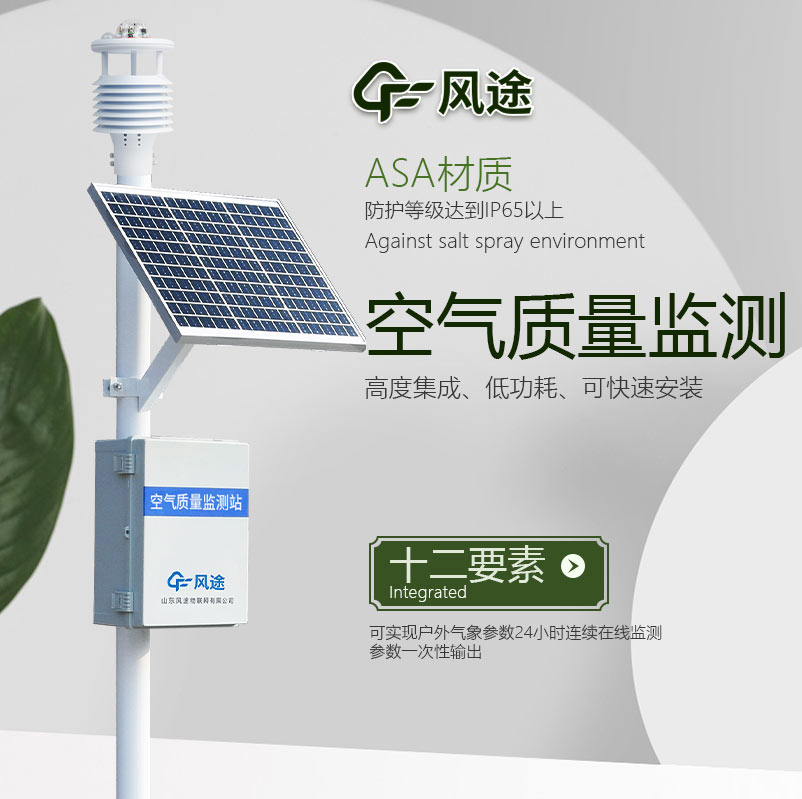Tianqiong Sensor IOT Technology Co., Ltd
Sales Manager:Ms. Emily Wang
Cel,Whatsapp,Wechat:+86 15898932201
Email:info@fengtutec.com
Add:No. 155 Optoelectronic Industry Accelerator, Gaoxin District, Weifang, Shandong, China

Sales Manager:Ms. Emily Wang
Cel,Whatsapp,Wechat:+86 15898932201
Email:info@fengtutec.com
Add:No. 155 Optoelectronic Industry Accelerator, Gaoxin District, Weifang, Shandong, China
time:2025-05-06 09:52:44 source:Weather Station viewed:183 time
Gridization is a technical means that divides the geographical space into several regular or irregular grid units. Through independent monitoring, analysis, and management of each grid, it achieves refined management of the entire region. In the field of environmental monitoring, grid-based management involves deploying a dense network of monitoring points within the monitoring area, dividing a large region into multiple sub-regions with spatial representativeness. Each grid can be regarded as an independent monitoring unit, thus constructing a monitoring network that covers the entire area. This management mode breaks through the limitations of traditional single-point monitoring and can more comprehensively and meticulously reflect the spatio-temporal variation characteristics of environmental elements within the region.
The Air Quality Micro-station based on gridization is precisely a new type of monitoring system constructed by utilizing the concept of grid-based management and combining it with micro-sensor technology. The system densely deploys micro air quality monitoring devices in areas such as urban streets, communities, and industrial parks. Each device is responsible for real-time monitoring of the air quality within its grid and collects data on the concentrations of pollutants such as PM2.5, PM10, sulfur dioxide, and nitrogen oxides. These micro monitoring devices are characterized by small size, low power consumption, and flexible deployment. They can be quickly installed on positions such as lampposts and the exterior walls of buildings to form a high-density monitoring network.
With the help of the Internet of Things and big data technologies, the system transmits the monitoring data of each grid to the data center in real time. Through data analysis models, it conducts dynamic evaluation and prediction of the regional air quality. Compared with traditional large-scale monitoring stations, the Air Quality Micro-station based on gridization has a higher spatial resolution. It can capture the subtle changes in air quality within a small-scale range, accurately locate the areas with high pollution levels, provide a scientific basis for environmental management departments to formulate targeted treatment measures, and help achieve refined control of air quality.

In an era where technological waves continue to surge and innovative achievements emerge endlessly, the public's environmental awareness has grown increasingly sophisticated, and their concern for ambient air quality has reached an unprecedented level. In the fast-paced modern life, as the inter...
In the field of meteorological monitoring, refined monitoring has become a trend. As an important part of refined monitoring, micro-meteorological monitoring is dedicated to obtaining more accurate and detailed meteorological information. It focuses on the changes of meteorological elements within a...
Air quality monitoring stations are compact in size and occupy a small footprint, making them easy to install and deploy. They can be flexibly set up in various locations, such as urban streets, parks, schools, communities, and industrial parks, and even installed on external walls of buildings or s...
In the field of meteorological monitoring, traditional monitoring methods have limitations in specific geographical environments. Ground-based equipment is restricted by terrain and difficult to achieve comprehensive coverage; while satellites can provide macro-level monitoring, they lack precision...